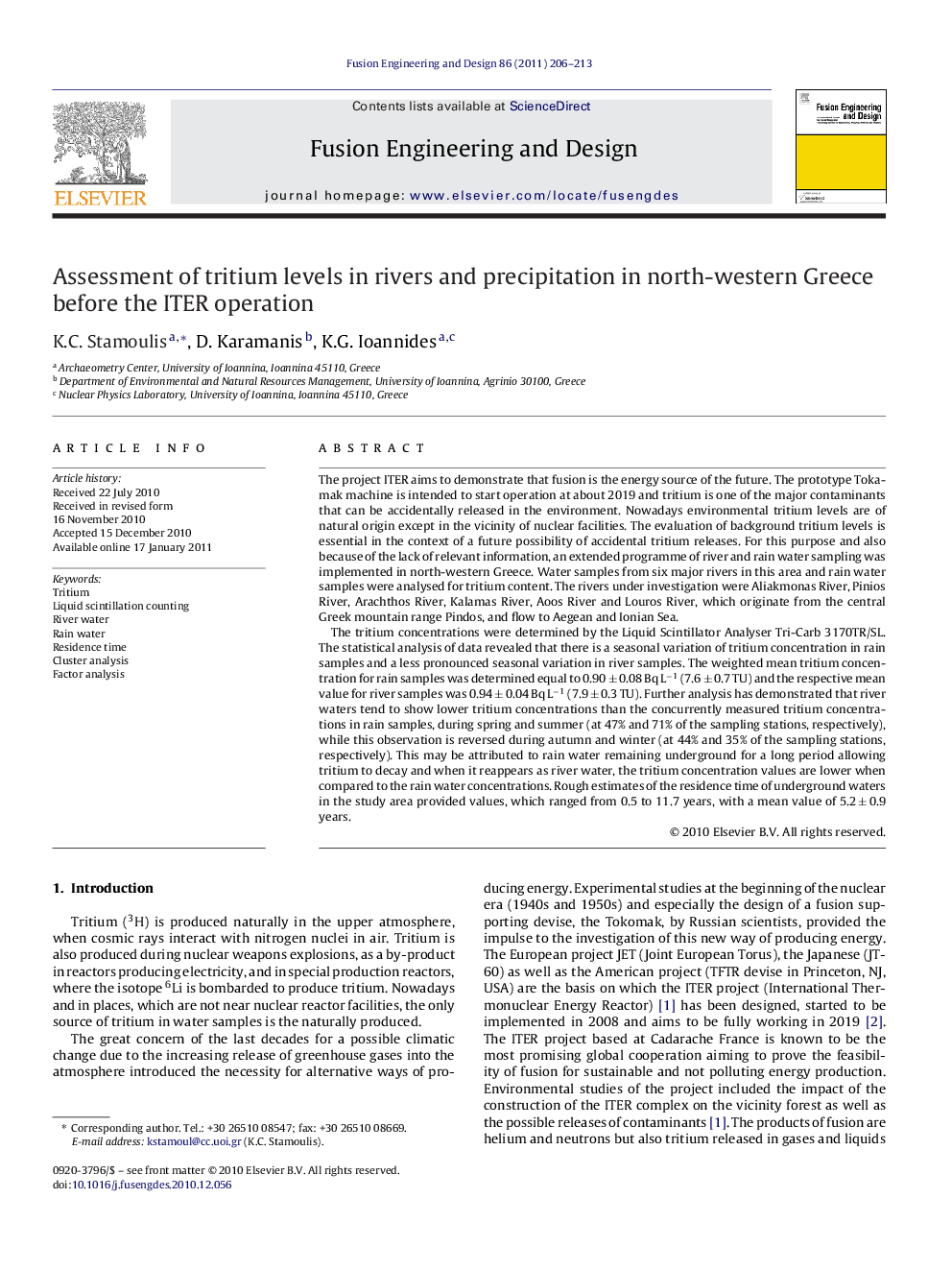| کد مقاله | کد نشریه | سال انتشار | مقاله انگلیسی | نسخه تمام متن |
|---|---|---|---|---|
| 272581 | 505026 | 2011 | 8 صفحه PDF | دانلود رایگان |

The project ITER aims to demonstrate that fusion is the energy source of the future. The prototype Tokamak machine is intended to start operation at about 2019 and tritium is one of the major contaminants that can be accidentally released in the environment. Nowadays environmental tritium levels are of natural origin except in the vicinity of nuclear facilities. The evaluation of background tritium levels is essential in the context of a future possibility of accidental tritium releases. For this purpose and also because of the lack of relevant information, an extended programme of river and rain water sampling was implemented in north-western Greece. Water samples from six major rivers in this area and rain water samples were analysed for tritium content. The rivers under investigation were Aliakmonas River, Pinios River, Arachthos River, Kalamas River, Aoos River and Louros River, which originate from the central Greek mountain range Pindos, and flow to Aegean and Ionian Sea.The tritium concentrations were determined by the Liquid Scintillator Analyser Tri-Carb 3170TR/SL. The statistical analysis of data revealed that there is a seasonal variation of tritium concentration in rain samples and a less pronounced seasonal variation in river samples. The weighted mean tritium concentration for rain samples was determined equal to 0.90 ± 0.08 Bq L−1 (7.6 ± 0.7 TU) and the respective mean value for river samples was 0.94 ± 0.04 Bq L−1 (7.9 ± 0.3 TU). Further analysis has demonstrated that river waters tend to show lower tritium concentrations than the concurrently measured tritium concentrations in rain samples, during spring and summer (at 47% and 71% of the sampling stations, respectively), while this observation is reversed during autumn and winter (at 44% and 35% of the sampling stations, respectively). This may be attributed to rain water remaining underground for a long period allowing tritium to decay and when it reappears as river water, the tritium concentration values are lower when compared to the rain water concentrations. Rough estimates of the residence time of underground waters in the study area provided values, which ranged from 0.5 to 11.7 years, with a mean value of 5.2 ± 0.9 years.
Journal: Fusion Engineering and Design - Volume 86, Issues 2–3, March 2011, Pages 206–213